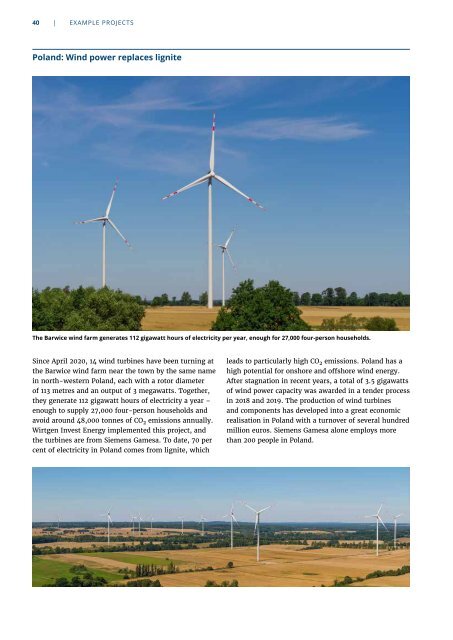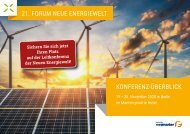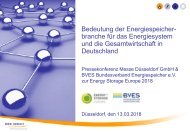Renewable Energy – Solutions for application in the communal energy infrastructure
This brochure contains a selection of successful renewable energy solutions suitable for a range of applications for local and national municipalities and economies. The main energy end-use sectors and the current state of the energy transition are briefly explained to provide readers with an understanding of the transformation of the greater energy system. The renewable energy technology options are explained, including their relevance and applications for municipalities. Finally, a selection of exemplary projects that have been successfully implemented in Europe, the Russian Federation and Central Asia, are included to demonstrate real applications and use-cases for renewable solutions. Renewable energies are cheap, clean and versatile.
This brochure contains a selection of successful renewable energy solutions suitable for a range of applications for local and national municipalities and economies. The main energy end-use sectors and the current state of the energy transition are briefly explained to provide readers with an understanding of the transformation of the greater energy system. The renewable energy technology options are explained, including their relevance and applications for municipalities. Finally, a selection of exemplary projects that have been successfully implemented in Europe, the Russian Federation and Central Asia, are included to demonstrate real applications and use-cases for renewable solutions. Renewable energies are cheap, clean and versatile.
You also want an ePaper? Increase the reach of your titles
YUMPU automatically turns print PDFs into web optimized ePapers that Google loves.
40 | EXAMPLE PROJECTS<br />
Poland: W<strong>in</strong>d power replaces lignite<br />
The Barwice w<strong>in</strong>d farm generates 112 gigawatt hours of electricity per year, enough <strong>for</strong> 27,000 four-person households.<br />
S<strong>in</strong>ce April 2020, 14 w<strong>in</strong>d turb<strong>in</strong>es have been turn<strong>in</strong>g at<br />
<strong>the</strong> Barwice w<strong>in</strong>d farm near <strong>the</strong> town by <strong>the</strong> same name<br />
<strong>in</strong> north-western Poland, each with a rotor diameter<br />
of 113 metres and an output of 3 megawatts. Toge<strong>the</strong>r,<br />
<strong>the</strong>y generate 112 gigawatt hours of electricity a year <strong>–</strong><br />
enough to supply 27,000 four-person households and<br />
avoid around 48,000 tonnes of CO 2 emissions annually.<br />
Wirtgen Invest <strong>Energy</strong> implemented this project, and<br />
<strong>the</strong> turb<strong>in</strong>es are from Siemens Gamesa. To date, 70 per<br />
cent of electricity <strong>in</strong> Poland comes from lignite, which<br />
leads to particularly high CO 2 emissions. Poland has a<br />
high potential <strong>for</strong> onshore and offshore w<strong>in</strong>d <strong>energy</strong>.<br />
After stagnation <strong>in</strong> recent years, a total of 3.5 gigawatts<br />
of w<strong>in</strong>d power capacity was awarded <strong>in</strong> a tender process<br />
<strong>in</strong> 2018 and 2019. The production of w<strong>in</strong>d turb<strong>in</strong>es<br />
and components has developed <strong>in</strong>to a great economic<br />
realisation <strong>in</strong> Poland with a turnover of several hundred<br />
million euros. Siemens Gamesa alone employs more<br />
than 200 people <strong>in</strong> Poland.








